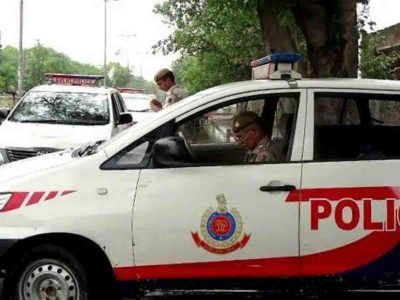Parts of Delhi on Monday experienced a surge in air pollution levels, reaching the ‘severe’ category, while the city’s overall air quality index (AQI) remained in the ‘very poor’ range for the third consecutive day, as reported by weather-monitoring agencies.
At 4 pm, the city’s 24-hour average AQI stood at 347, a deterioration from 325 on Sunday, 304 on Saturday, and 261 (categorized as ‘poor’) on Friday, according to data from the Central Pollution Control Board (CPCB). Earlier in the week, the AQI was 256 on Thursday, 243 on Wednesday, and 220 on Tuesday.
Specific areas, including Rohini (406), Wazirpur (416), and Mundka (414), reported air quality in the ‘severe’ zone (AQI above 400). In neighboring regions, the AQI recorded were 272 in Ghaziabad, 300 in Faridabad, 203 in Gurugram, 303 in Noida, and 336 in Greater Noida.
The categorization of AQI ranges from ‘good’ (0-50) to ‘severe’ (401-500). The deterioration in air quality to the ‘very poor’ category on Saturday was attributed to slow wind speeds at night and a decline in temperatures. According to the Centre’s Air Quality Early Warning System for Delhi, the ‘very poor’ air quality is expected to persist for a few more days.
Meteorologists link the heightened pollution levels in Delhi in October 2023 to a lack of rainfall, making it worse than the preceding two years. Delhi Environment Minister Gopal Rai pointed out that although stubble burning in Punjab has decreased, vehicular emissions remain a significant contributor to the city’s air pollution. He urged the Centre to enforce a strict ban on buses using poor-quality diesel in the National Capital Region (NCR) areas of Haryana, Uttar Pradesh, and Rajasthan.
Starting November 1, only electric, CNG, and BS VI-compliant diesel buses will be allowed to operate between Delhi and cities and towns in Haryana, Uttar Pradesh, and Rajasthan within the NCR, as directed by the Centre’s Commission for Air Quality Management (CAQM).
In an effort to combat pollution, the Centre mandated in April 2020 that all vehicles sold in India comply with the Bharat Stage VI (BS-VI) emission standards. These standards set limits on air pollutants emitted by vehicles, emphasizing improved emission control, fuel efficiency, and engine design.
Unfavorable meteorological conditions, combined with emissions from firecrackers, paddy-straw burning, and local sources, contribute to hazardous air quality in Delhi-NCR during winter. The Delhi government’s 15-point action plan aims to address dust pollution, vehicular emissions, and open burning of garbage, with ongoing special drives to curb pollution.
A comprehensive ban on the manufacture, storage, sale, and use of firecrackers in the city has been reinstated, accompanied by a public awareness campaign, “Patakhe Nahi Diye Jalao,” to discourage their use. The government has also identified and formulated mitigation plans for pollution hotspots, introducing measures like suppressant powder to control dust pollution, utilizing chemical agents such as calcium chloride, magnesium chloride, lignosulfonates, and various polymers.
(With PTI inputs)





